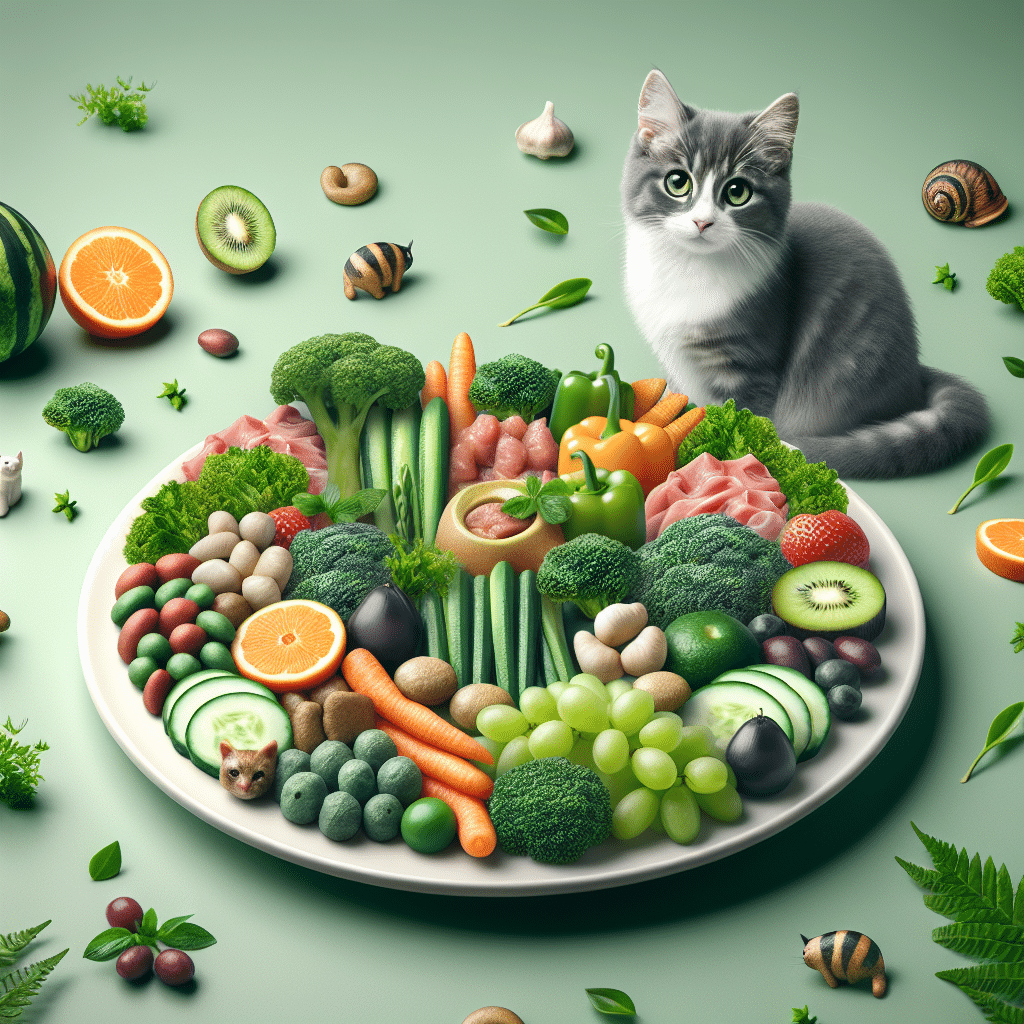What is Organic Cat Food?
Organic cat food is made from ingredients that are produced without the use of synthetic fertilizers, pesticides, herbicides, or artificial preservatives. These foods are sourced from farms that follow organic farming practices, ensuring that the nutritional value is intact and that the ingredients are natural and wholesome.
Benefits of Organic Cat Food
-
Better Nutritional Value
Organic cat food is often richer in essential nutrients, thanks to the quality of the ingredients used. The absence of artificial additives means that the nutrients in organic food can be more readily absorbed by your cat’s body, promoting better overall health. -
Fewer Allergies and Sensitivities
Cats can be sensitive to artificial additives and ingredients found in conventional cat food. Organic options tend to contain fewer allergens, making it easier for cats with sensitive stomachs or food allergies to digest. -
Enhanced Immune System
A diet rich in organic ingredients can help boost your cat’s immune system. Natural ingredients like high-quality meats, fish, and vegetables contain antioxidants that fight against diseases and promote long-term health. -
Ethical and Sustainable Practices
Choosing organic cat food often means supporting farms that employ sustainable practices. These farms prioritize animal welfare, ensuring that the animals involved in the food production process are treated humanely.
Types of Organic Cat Food
-
Dry Cat Food (Kibble)
This type of organic food is convenient to store and has a long shelf life. Look for brands that use high-quality protein sources as the first ingredient and avoid fillers such as corn and soy. -
Wet Cat Food (Canned)
Canned organic cat food is often higher in moisture content, which is essential for cats that don’t drink enough water. These foods are typically more palatable and may contain chunks of meat, providing a more natural eating experience. -
Raw Cat Food
Raw organic cat food adheres to a natural diet resembling what cats would eat in the wild. It can include raw meats, bones, and organ meats. This type of food focuses on primal nutrition, although it requires careful preparation and handling to avoid contamination. -
Freeze-Dried Food
This type of food offers the convenience of dry kibble while retaining more nutrients than traditional dry cat food. Freeze-dried food can be rehydrated before feeding and is typically made of high-quality, organic ingredients.
What to Look for in Organic Cat Food
-
Ingredient List
Check for whole food ingredients, such as real meat, fish, vegetables, and fruits. Organic certifications should be prominently displayed. Keep an eye out for fillers and artificial additives. -
Protein Source
Cats are obligate carnivores, meaning they thrive on a meat-based diet. Look for organic cat food brands that list high-quality protein sources as the main ingredient—like chicken, turkey, or fish. -
AAFCO Approval
Make sure that the cat food meets the standards set by the Association of American Feed Control Officials (AAFCO). This certification ensures that the food is complete and balanced for your cat’s dietary needs. -
Life Stage Appropriateness
Choose a product formulated for your cat’s specific life stage (kitten, adult, or senior). Nutritional requirements can vary significantly across these stages, and a quality organic brand will cater to these differences.
The Role of Natural Ingredients
Incorporating natural ingredients in your cat’s diet not only boosts their health but also enhances their taste experience. Here are some key natural ingredients to look for:
- Whole meats (e.g., chicken, salmon) provide protein and essential amino acids.
- Fruits and vegetables like blueberries and carrots are excellent sources of antioxidants and fiber.
- Healthy fats, including omega-3 and omega-6 fatty acids from fish oil or flaxseed, contribute to healthy coat and skin.
- Probiotics to support digestive health, commonly derived from natural sources like chicory root.
Common Misconceptions
-
Organic equals expensive: While organic cat food may come with a higher price tag, the long-term health benefits can lead to fewer vet visits and less spending on medications.
-
All organic foods are grain-free: Not all organic cat foods are grain-free. Some grains, like brown rice or oats, can be healthy inclusions if they come from organic sources.
Transitioning to Organic Cat Food
-
Short Transition Period
Introduce organic cat food gradually by mixing it with your cat’s current food over a 7-10 day period. Begin with 25% new food and increase the amount gradually. -
Monitor Your Cat’s Response
Keep an eye on your cat’s health during the transition. Look for signs of digestive upset, allergies, or general well-being to determine if the new food is a good fit. -
Stay Consistent
Once your cat has adjusted, maintain a consistent feeding routine to help them adapt to the organic diet.
Popular Brands
Some reputable brands known for their organic cat food options include:
- Wellness
- Natural Balance
- Instinct
- Fancy Feast Purely
- Blue Buffalo Wilderness
These brands focus on high-quality ingredients and adhere to strict organic standards, offering a variety of formulations to meet different dietary needs.
Conclusion
Choosing organic cat food with natural ingredients is a significant step towards ensuring your cat’s health and well-being. By prioritizing high-quality proteins, wholesome fruits, and vegetables, you can offer your feline friend a diet that is not only nutritious but also ethically produced. The benefits of organic cat food extend beyond health and nutrition; they also contribute to environmental sustainability and humane farming practices. With a growing market of organic options available, you can easily find the perfect diet for your beloved pet.
